Imagine your feathered friend as a tiny detective with wings, investigating every corner of your home with a curiosity that would rival Sherlock Holmes. Just like these intrepid explorers, birds use their beaks to interact with the world around them. While it’s adorable to watch them play and discover, as a pet owner, your prime duty is ensuring bird safety in the home. Part of this mission is being vigilant about toxic houseplants for birds because, let’s be honest, not all greenery is parrot-dise.
Some plants, although pleasing to the eye, are like the villains in our feathered friends’ adventures—seemingly harmless but potentially lethal. The list of poisonous plants for birds can read like a who’s who of common houseplants, including everyday species that could lead your bird down a perilous path. It’s essential to keep tabs on these botanical bad guys and to focus on keeping birds safe around plants.
Key Takeaways
- Identify and learn about common toxic houseplants for birds to prevent accidental poisoning.
- Understand the importance of keeping birds safe around plants in your home.
- Be proactive about bird safety in the home by removing potentially poisonous plants for birds.
- Seek reliable resources and consult experts when in doubt about plant safety.
- Create a bird-safe habitat by being well-informed and taking necessary precautions.
The Hidden Dangers of Indoor Gardening for Pet Birds
As an avian enthusiast, you might find delight in surrounding yourself and your feathered pals with lush indoor plants. However, be wary of the botanical booby traps! Amidst the greenery, some plants lead a double life, playing the role of both decor and danger. Indoor gardening with birds can be akin to navigating a minefield without a map, where the beautiful Oleander doubles as an agent of toxicity, and the charming Lily of the Valley moonlights as a cardiac criminal.
Common houseplants poisonous to birds, such as Rhododendron and Foxglove, can cast a shadow over your bird’s health by inducing abnormal heart rhythms and even cardiovascular chaos. Like a silent movie villain twirling his mustache, Dieffenbachia and Philodendrons—those popular stars of the potted world—can cause an opera of oral irritation and gastrointestinal turmoil with just a nibble.
It’s not just the well-known bad guys; many an unassuming leafy figure has yet to make the list of toxic indoor plants for birds. Symptoms afflicting your avian actors can range from the dramatic—vomiting and diarrhea—to the subtle signs of weakness and depression, making you question whether they just watched a sad movie or are actually in distress.
| Plant Name | Known Toxins | Health Hazards for Birds |
|---|---|---|
| Oleander | Cardiac Glycosides | Heart rhythm changes, potential for collapse |
| Lily of the Valley | Cardiac Glycosides | Abnormal heart rate, vomiting, depression |
| Rhododendron | Grayanotoxins | Cardiovascular disturbances, weakness |
| Foxglove | Cardiac Glycosides | Severe digestive upset, changes in heart function |
| Dieffenbachia | Oxalates | Mouth irritation, difficulty breathing, digestive upset |
| Philodendron | Oxalates | Oral discomfort, excessive drooling, swallowing difficulties |
Considering each bird species reacts to botanical bandits in its own way, one should arm themselves with bird care tips rather than relying solely on an encyclopedia of evil flora. After all, the goal is to craft an avian Eden where your birds can forage and fly, without the risk of becoming inadvertent plant-icide detectives. Keep a keen eye on your greenery to ensure a safe habitat for your winged wonders.
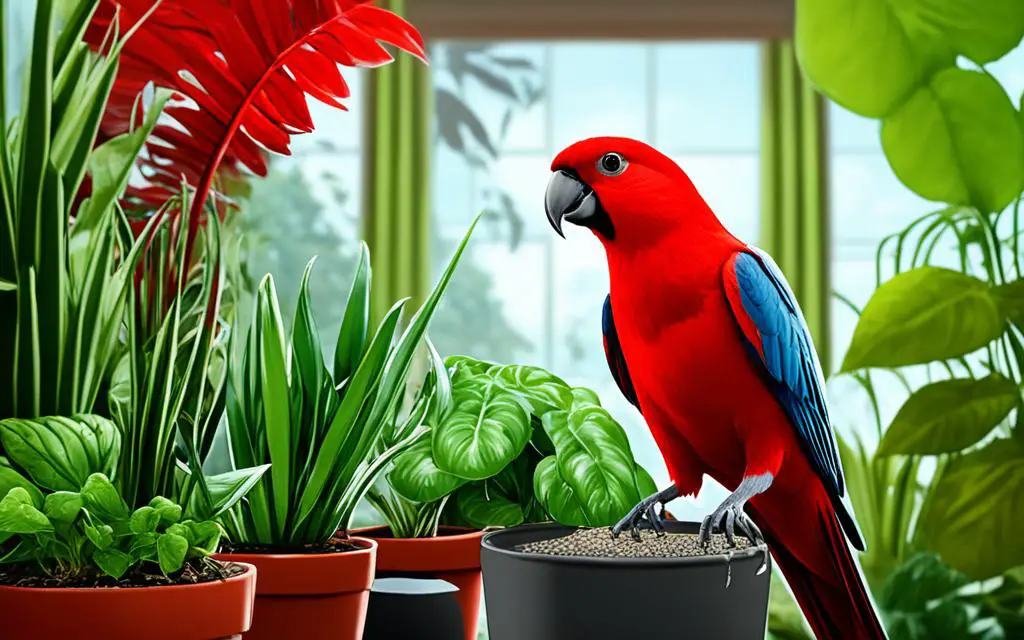
Evidently, it’s paramount to scrutinize your shrubbery selection with the precision of a peck… Ahem, I meant to say, a fine-tooth comb. At the edge of every leaf, behind the veil of every petal, could lie a treacherous truth – a threat to your bird’s well-being. When in doubt, pretty plants must face the trial of avian safety before they are granted asylum in your home. Cultivate awareness, cultivate life, and of course, cultivate those harmless greens that your birds can investigate without a bout of beak-induced bellyaches.
Recognizing the Symptoms of Plant Toxicity in Birds
As a bird guardian, your vigilance in detecting early signs of plant toxicity could save your feathered friend’s life. Birds may not be able to say “That leaf was a major no-no,” but they can certainly show signs. Let’s tune in to some feathered SOS signals, shall we?
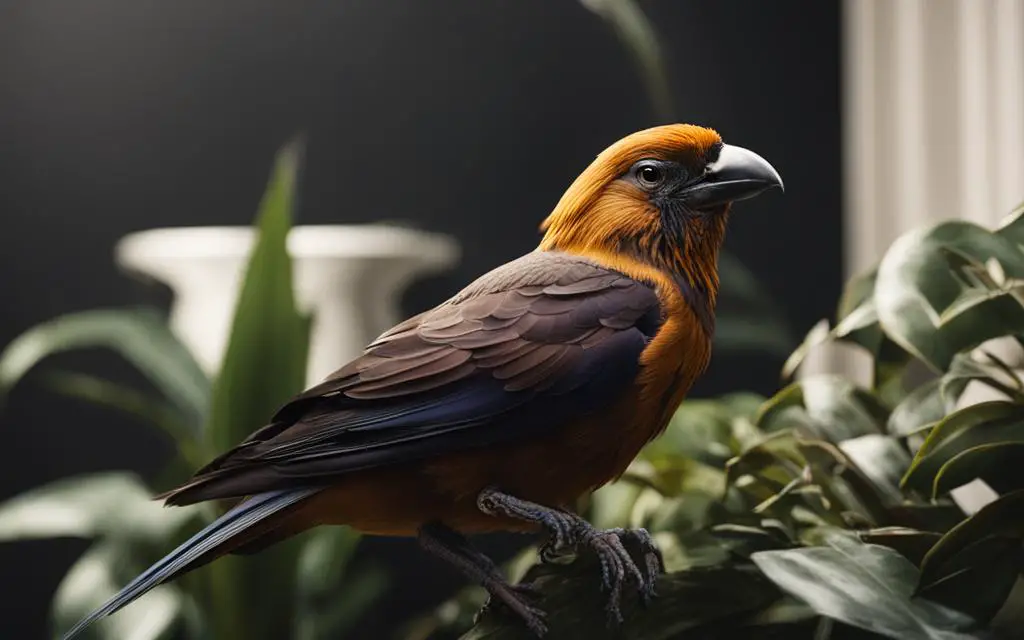
Vomiting in Birds: A Sign of Poisoning
It’s no secret that birds are masterful mess-makers, but when your bird starts to vomit, it’s not just showing off a new party trick. Vomiting can be an alarming marker of bird poisoning symptoms that should ruffle your feathers in concern. If your bird is suddenly impersonating a tiny, feathered fountain, it might be time to reevaluate its recent activities around your indoor jungle. Keep an eye out: those colorful leaves they found fascinating yesterday could be today’s stomach-churning regret.
Diarrhea and Lethargy: More Than Just Illness?
When your energizer birdie suddenly slows down, exhibiting diarrhea and lethargy, you might ponder if it’s just having an “off” day or if it’s a sign of something more treacherous. While a lazy Sunday can hit the best of us, persistent sluggishness coupled with worryingly watery droppings could signal signs of plant toxicity in birds. If the usual pep in their step seems more like a weary waddle, it’s time to consider a toxic tango with your houseplants.
When to Seek Veterinary Care for Suspected Toxicity
If your winged compadre is showing symptoms that have you squawking in worry, don’t wing it—seek professional veterinary care for birds ASAP. Dramatic changes in behavior, heart rate hesitations, and gasping for air are not part of your bird’s attempt to play Charades. These could be dire warnings that it’s time to fly to the vet. Remember, the magic word is haste! Delay could mean the difference between a feathered fable and a happy chirp-fest reuniting you with a healthy bird. Be the hero in this tale and ensure your bird receives the avian health care it needs pronto!
Always keep an eye out for these symptoms. If spotted, act fast to keep your avian amigos safe and sound. After all, in the world of pet birds, an ounce of prevention is worth a pound of cure—or should we say, a feather of prevention is worth a whole bird of health!
What Houseplants are Toxic to Pet Birds?
As you sit cozily beside your winged companion, be aware that not all that’s green in your home is meant to be seen—or nibbled on—by your feathered friends. Certain common toxic houseplants stand out as botanical villains in the eyes of bird owners. Yes, the usual suspects: lovely but lethal.
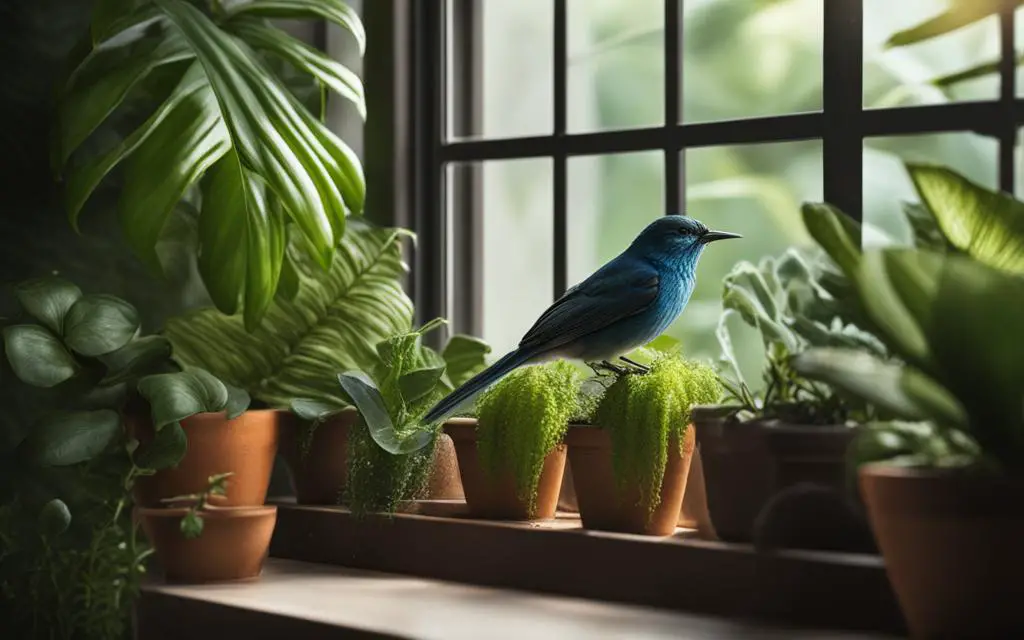
These undercover culprits, parading as harmless ornaments, can introduce a real threat to those who enjoy a flutter around the house. If you’re not diligent, today’s plant decorations could be the source of tomorrow’s birdie detestation—that’s right, we’re talking toxic plants for pet birds here!
Take the seemingly innocent azalea or rhododendron, for instance. Both are associated with potentially stirring up some cardiovascular betrayal. And who hasn’t admired a sago palm or jade plant? Yet, these possessions can pose a real imposition when it comes to your birds’ welfare.
Imagine a hungry beak meeting the wrong green leaf: avocados may well turn a chirpy flapper into a distressed napper with their threat to cardiac tranquility. And while tossing garlic and onions into your cooking might make your taste buds soar, these common kitchen culprits can send pet birds careening towards health horror stories, with the added twist of potential kidney damage—certainly not your intended plot.
Rhubarb leaves? More like rhubarb griefs. They’re the unsung villains stimulating gastronomical drama and troublesome kidney sequels in your avian dramas. All these plants carry not a badge of honor but a mark of danger—a high risk of severe effects and even mortality. Such perilous plants deserve no standing ovation in a bird-inhabited home. No encore, please!
To fortify your home against these botanical foes, start with a script devoid of these dastardly decorations. Instead, fill your set with bird safe houseplants and pet bird friendly houseplants that pose no threat to your chirpy ensemble cast. A wise move, indeed, for the discerning bird parent seeking a harmonious habitat.
Your home can absolutely co-star greens and feathered beings in a symphony of safety and style—with just the right casting of non-toxic flora. It’s not just about avoiding the plants that can’t play nice with nibblers; it’s about cultivating a safe haven where tail feathers can wag without worry—a true bird Eden.
- Beware the decoration that doubles as a danger.
- Opt for a green scene that’s serene—ransack your residence of risky roots and replace with bird-friendly botanicals.
- Put your pet first—not all that’s leafy is worth the levy.
Remember, it’s not just your green thumb that’s at stake here—it’s feathery lives. So, while you’re pruning your plants, be sure to weed out the hazards. After all, your charismatic cockatoo thinks those blooms are for food, not just for looks!
Crafting a Safe and Plants-Friendly Avian Environment
Welcome to the ultimate guide in preventing bird poisoning from plants. In your quest for a happy and vibrant home for your winged companions, understanding the steps for bird-proofing your home is akin to mastering the art of avian feng shui. Here, we’re transforming potential plant pitfalls into a lush, feather-friendly paradise.
Bird-Proofing Your Home
If you’ve ever caught your bird in a suspicious standoff with your Spider Plant, then you know the importance of bird-proofing your home. It’s like setting up a playground: You wouldn’t include a swing set that doubles as a booby trap, right? Steer clear of plant troublemakers like the seemingly wholesome avocado or the treacherous rhubarb leaves, which could turn a pecking session into an emergency.
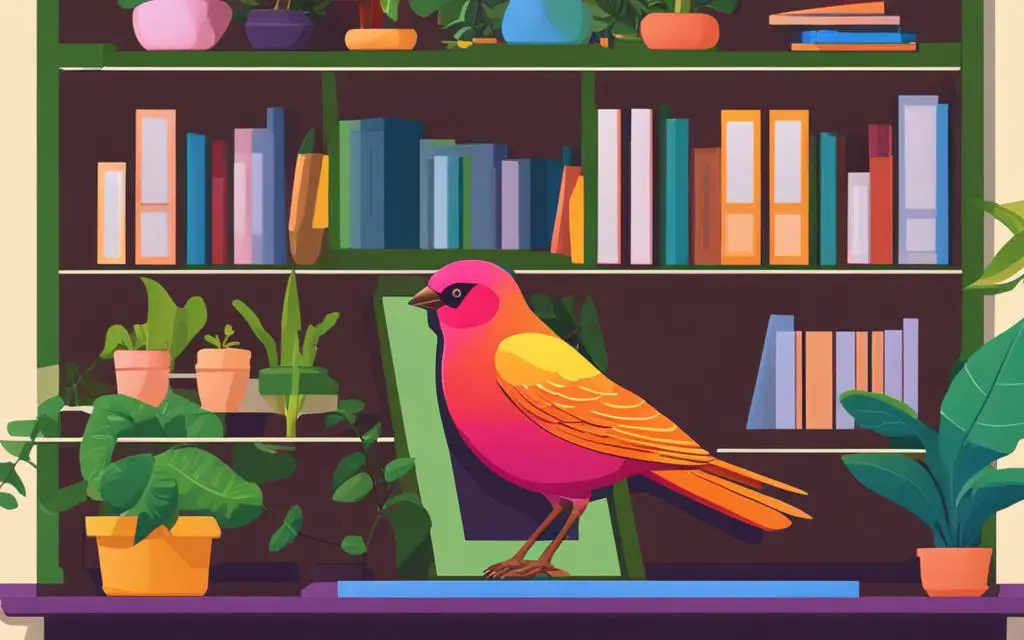
Non-Toxic Houseplants for Birds: Creating a Safe Indoor Jungle
Now, for the exciting part: selecting safe plants for pet birds to spruce up your habitat. Your bird’s living space doesn’t have to be a botanical bore. You can create an indoor jungle that Tarzan and Jane would envy, minus the mischievous monkeys and, of course, the poison arrows. Enrich their environment with non-toxic houseplants for birds like bamboo, beech, or even elm. Just remember: variety is the spice of life, but, unlike spices, make sure these green buddies are beyond reproach when it comes to toxicity.
| Safe Plant | Type of Plant | Benefits |
|---|---|---|
| Bamboo | Grass | Aesthetic appeal, air purification |
| Beech | Tree | Natural perching option, safe chewing |
| Dogwood | Shrub/Tree | Durable, safe for toy making |
| Elm | Tree | Non-toxic leaves, safe for interaction |
| Guava | Tree | Edible, nutritious fruits for birds |
Don’t forget to unleash your inner bird whisperer when it comes to plants like eucalyptus and oak. Though they often fly under the radar of safe botanicals, an ounce of caution can prevent a pound of feather-fluffing worry. Keep your binoculars on your birds and your thumbs green but clean, ensuring a feather-fabulous, plant-positive domain!
Avoid the Risks: Common Houseplants Poisonous to Birds
While your home’s interior decorations may enhance the aesthetics, they could be secret agents of danger to your pet birds. It’s crucial to recognize the houseplants harmful to pet birds and take action to prevent your avian companions from becoming inadvertent victims. It’s a jungle out there—literally—and your pet bird’s safety hangs in the balance.
As a bird owner, you should give a wide berth to decorative but dangerous plants like mistletoe, holly, ivy, and lilies. These common houseplants may look innocent enough to earn a spot in your living room or kitchen, but behind their lush leaves and vivid colors, they hide a menacing potential. Birds, with their instinctive nibbling, can suffer from symptoms such as gastrointestinal distress and hypersalivation.
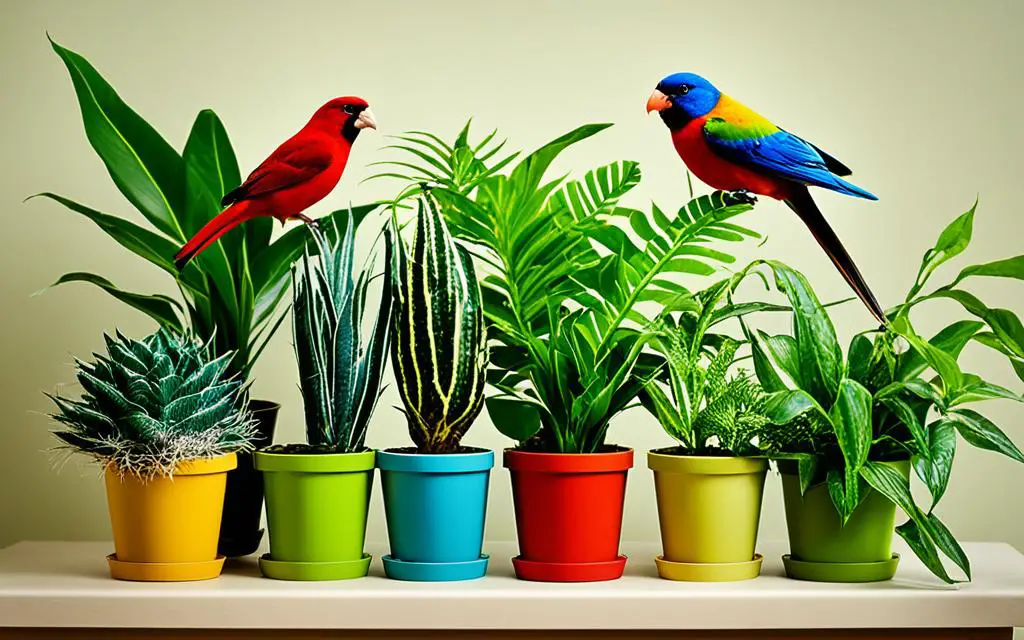
If you think these reactions are merely “for the birds,” think again. Ingestion could escalate to convulsions or even coma, putting the ‘grave’ in your lovely gardenias. Even shamrock plants, often associated with good fortune, can have the opposite effect on your feathered friends. Instead of cheering “Erin Go Bragh,” you might find yourself on a frantic dash to the avian vet.
Instead of putting your bird’s health at risk, consider substituting these plants with their synthetic twins or bird-safer alternatives. Here’s a list of some common troublemakers and the problems they could brew:
| Plant | Toxic Parts | Potential Bird Symptoms |
|---|---|---|
| Mistletoe | Berries, Leaves | Vomiting, Diarrhea, Weakness |
| Holly | Berries, Leaves | Gastrointestinal Distress, Hypersalivation |
| Ivy | All Parts | Abdominal Pain, Excessive Drooling |
| Lilies | All Parts | Seizures, Coma, Gastrointestinal Upset |
| Poinsettias | Leaves, Sap | Irritation to Mouth and Stomach, Vomiting |
| Shamrock Plants | All Parts | Tremors, Excessive Salivation |
So how can it be safe for your winged explorers? You may want to strip away the vegetation vermin and consider fostering a greener, safer haven with pet bird safe houseplants. In case a parrot’s party trick involves beak-gardening, be sure to plant only the safest green guests in their pecking perimeter. It’s worth the peace of mind to you and the safety of your chirping chums.
- Rover may have a rubber tree, but Polly prefers her plants non-toxic.
- Spread your wings and branch out with safe decorative greenery for a bird-friendly sky pad.
- Remember: Not all that stems is gold—protect your birds from those conniving, poisonous plants for birds.
Sharpen your botanical awareness and clear the decks for feathered frolicking. Let your bird’s biggest worry be which tune to whistle next—not what leaf to avoid at all costs.
Toxic Plants Specific to Certain Bird Species
Ever wonder if those lush plants you’ve adorned your abode with are the botanical equivalents of a Trojan horse for your pet bird? It’s a thought that could give Hitchcock’s “The Birds” a run for its money, in the suspense department at least! When it comes to the safety of our feathered companions, the plot thickens with common toxic houseplants. Not all plants are equal-opportunity offenders; some are more like a tailored suit of woes, fitting certain bird species to a ‘T’ while barely ruffling the feathers of others.
For instance, the menacing foliage that could stage a Shakespearean tragedy for a Macaw might not even warrant a melodrama for a pigeon. You might ask, “To preen or not to preen?” Well, the answer isn’t simple, as the effects of potentially toxic plants can vary dramatically between avian species, influenced by factors such as the bird’s stature and unique physiological makeup.
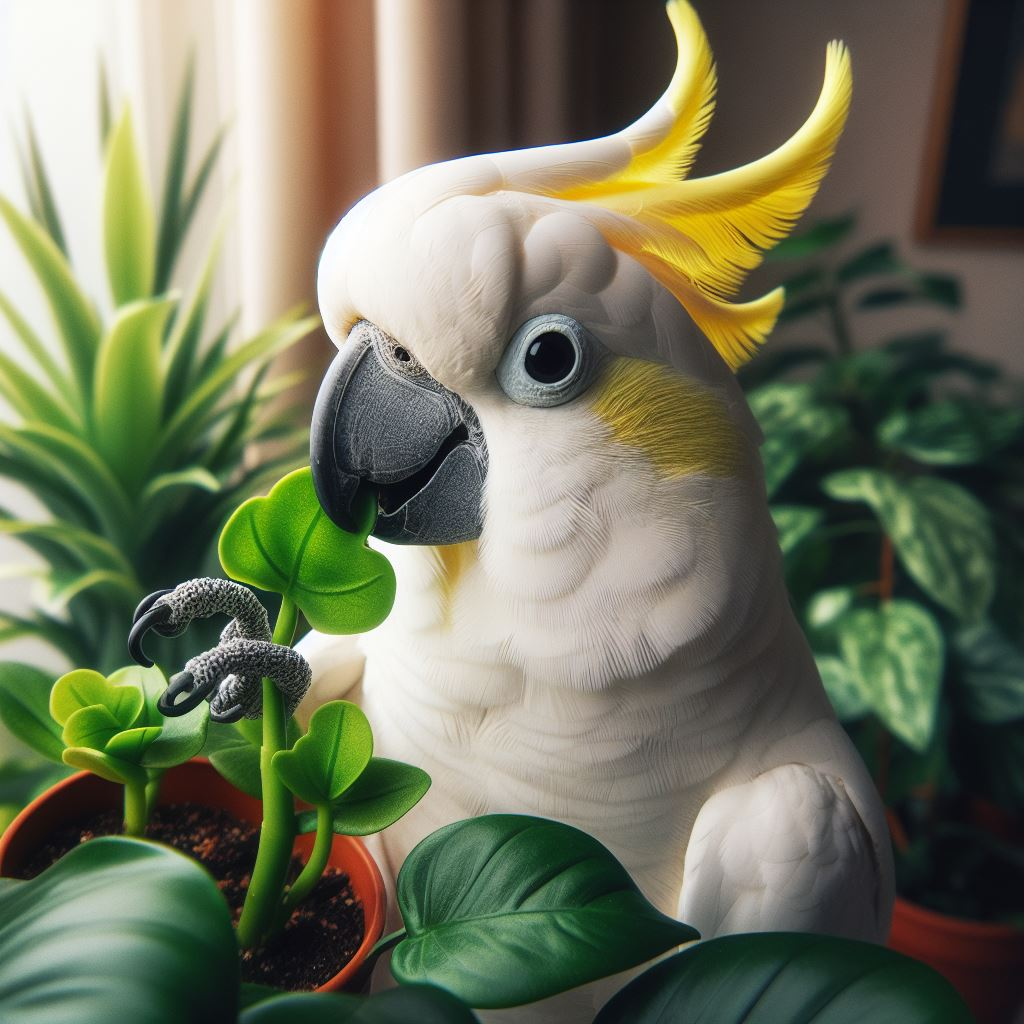
With a habitat shared with humans and their horticultural hobbies, it’s wise to keep the mix of greenery strictly to bird safe indoor plants. The risk otherwise? Your curious Cockatoo or inquisitive African Grey becoming a victim of accidental poisoning, leaving you to recount a woeful tale of a botanical baddie rather than enjoying their conversational capers.
And so, dear avian aficionados, let us leaf… err… leave no stone unturned. Ensure that your parrot’s paradise isn’t just a mirage painted by nefarious fronds. Here’s a tidbit of wisdom to chew on: know your plants like you know your birds, and ensure those that keep company with your chirping chums are the model citizens of the plant world.
| Toxic Plant | Species at Higher Risk | Reason for Increased Sensitivity |
|---|---|---|
| Avocado (Persea Americana) | Canaries, Parakeets | Cardiotoxic effects more pronounced due to smaller size |
| Chocolate (Theobroma cacao) | Macaws, Cockatoos | Metabolize theobromine more slowly, increasing toxicity |
| Oleander (Nerium oleander) | All Pet Birds | Contains compounds affecting heart function across species |
| Lilies (Lilium spp.) | Finches, Canaries | Renal failure more likely due to smaller body mass |
| Tobacco (Nicotiana spp.) | All Pet Birds | Respiratory system highly susceptible to nicotine |
Gone are the days when one could simply spruce up their aviary with any old plant—now it’s an episode of “Survivor: Pet Birds Edition”. Fear not, because with a little knowledge and a dash of vigilance, your role as the guardian of the flock is sure to be a flying success. Your motto: If it’s not a bird safe indoor plant, it can take root elsewhere!
Armed with the know-how of specific no-gos in the flora department, you’re better poised to foster a tailored sanctuary—a veritable shangri-la for your winged wards, keeping them in high spirits and good health. After all, isn’t that just what the bird-doctor ordered?
Alternative Safe Houseplants: Ensuring Pet Bird Health
What’s green, can be chewed on, and doesn’t whisper sinister plots against your pet bird’s health? The answer is alternative safe plants for birds. Creating that lush, avian-friendly Eden in your own home is akin to feathering the proverbial nest; making sure everything within beak’s reach is as harmless as a cotton ball. Whether it’s for decking the halls or just providing a chewy distraction, your choices in foliage should be as prudent as selecting toys for a toddler.
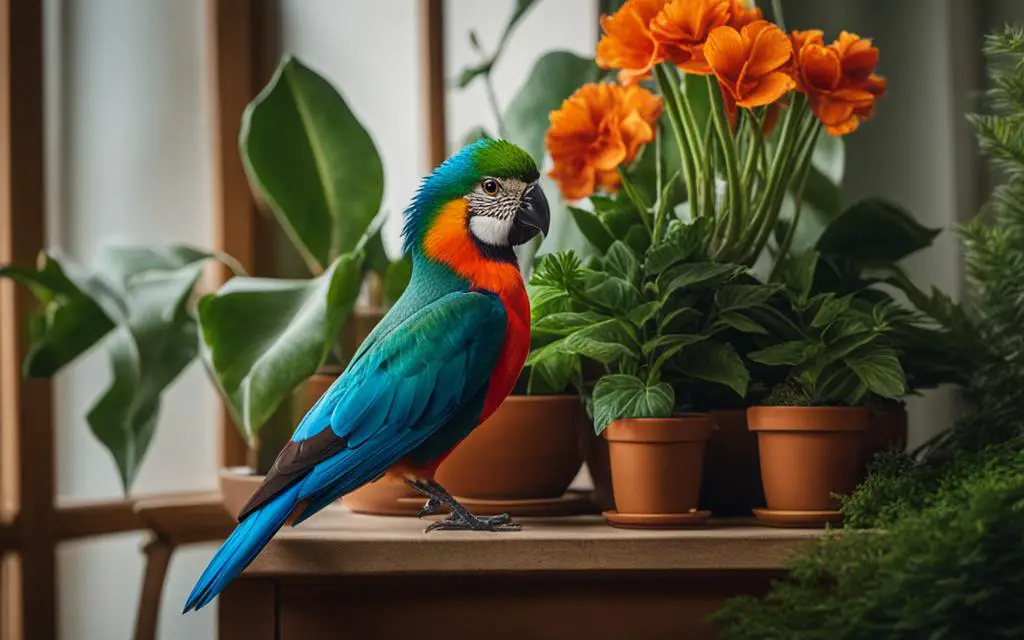
Safe Plants for Pet Birds to Chew On
Leave no stone unturned or leaf unchewed, as they say in the bird world. Indeed, there’s nothing more reassuring than watching your pet parakeet tear into a leaf from an apple tree, transforming it into confetti without a care—because you’ve doubled-checked its avian safety rating. Apple, along with bamboo, and grapevines, are some of the top choices that won’t turn playtime into an unexpected vet visit.
- Apple (safe for beak-explorers and perch enthusiasts)
- Bamboo (your bird can pretend it’s a panda for a day)
- Grapevines (not just for winemaking, ideal for bird’s play)
- Alder (just in case your bird fancies itself a carpenter)
- Beech (for the sophisticated bird that appreciates a sturdy perch)
- Willow (chewing these branches is like bird television, minus the remote control)
Best Bird Toys to Keep Your Feathered Friends Entertained
Your pet birds need more than just safe plants for their daily dose of fun, and best bird toys steal the spotlight for bird enrichment activities. From rattles to puzzles, a well-rounded toy chest is essential for their play-and-learn lifestyle. Incorporating materials from the safe plants list, you can even DIY some toys. Why not string together some beads and grapevine rings? Or offer a bouquet of alder twigs? The possibilities are as endless as your creativity—and your bird’s zest for destruction.
| Toy Type | Description | Benefits |
|---|---|---|
| Mirrors | Reflective toys that simulate a flock | Social interaction, mental stimulation |
| Foraging Toys | Toys that hide treats and encourage natural foraging behavior | Mental and physical exercise |
| Ropes & Rings | Various shapes and textures to claw and chew | Beak health, coordination |
| Puzzles | Challenging games that reward problem-solving | Intellectual engagement, treats reward |
| DIY Toys | Home-made toys using safe plant materials | Personalization, familiarity, satisfaction of DIY |
Remember, when in doubt, plant it out! Switch out the risky greens for safe plants for pet birds to chew on and supplement the foliage with some prime-time bird entertainment. You’ll sleep better at night knowing that your chirpy roommates are both happy and healthy—transforming your domestic jungle into an aviary wonderland.
How to Prevent Birds from Eating Toxic Houseplants
Creating a bird-safe environment goes beyond feeding them the right seeds and ensuring their cage is snug as a bug in a rug—it also means turning your home into Fort Knox for toxic plants. The primary step in learning how to prevent birds from eating houseplants is quite simple: don’t let those green goodies and your bird’s beak meet. Supervision is critical, especially for those free-flyers who view your living room as a verdant jungle ripe for exploration. Like a hawk-eyed guardian, it’s up to you to keep those watchful eyes peeled and supervise your feathered friends rigorously.
Supervision Strategies: Keeping a Watchful Eye
Now, let’s talk strategy. If supervising birds around plants were a sport, you’d be the MVP of the household league. Keep poisonous plants on the top shelf or, better yet, out of the home entirely. If your bird’s cage is mobile, ensure it’s stationed well away from potential botanical bad boys. And remember, despite their charming chirps and clever antics, birds are not equipped to discern a meal from a menace when it comes to flora.
Alternatives to Houseplants: Bird-Safe Decor
But a home without plants is like a nest without feathers—pretty bare. So, here’s the pitch: swap out the toxic triffids for some bird-safe decor. Get creative with artificial plants (they’ve come a long way from the plastic ferns of yore). Consider non-toxic options that add a splash of green without the scream, figuratively speaking, of course. And in the off chance your bird does sample something foul, ensure you know where to find a bird veterinarian near me—that’s your lifeline when “Oh no, Polly ate what?!” becomes today’s drama.
FAQ
What common indoor plants are toxic to pet birds?
Are philodendron plants toxic to parrots?
Is aloe vera safe for birds?
Are peace lilies safe for birds to be around?
What happens if a bird eats a toxic plant?
How can I prevent my birds from eating houseplants?
What non-toxic houseplants can I safely keep around my pet birds?
What should I do if I think my bird has been poisoned by a plant?
Which plants are safe for birds to chew on?
What are the best toys to keep my bird entertained and away from houseplants?
Where can I find a bird veterinarian near me?
Source Links
- https://nwparrotrescue.org/important-documents/safe-or-toxic-natural-woods
- https://www.thesprucepets.com/common-plants-that-are-toxic-to-birds-390817
- https://vcahospitals.com/know-your-pet/plants—toxic-for-birds

My name is Shane Warren, the author behind Your Bird Buddy – your ultimate guide to the wonderful world of birds! Unleash your inner avian explorer as we delve into a vibrant library of knowledge dedicated to all things feathered. From learning about diverse bird species from across the globe to understanding their captivating habitats and behaviors, I’m here to fuel your passion for these magnificent creatures. Not only that, but I also provide valuable insights on being a responsible and informed pet bird owner. Join our vibrant community and let’s celebrate the feathered wonders of the world together – one chirp at a time. And be sure to join our Your Bird Buddy Community over on Facebook!

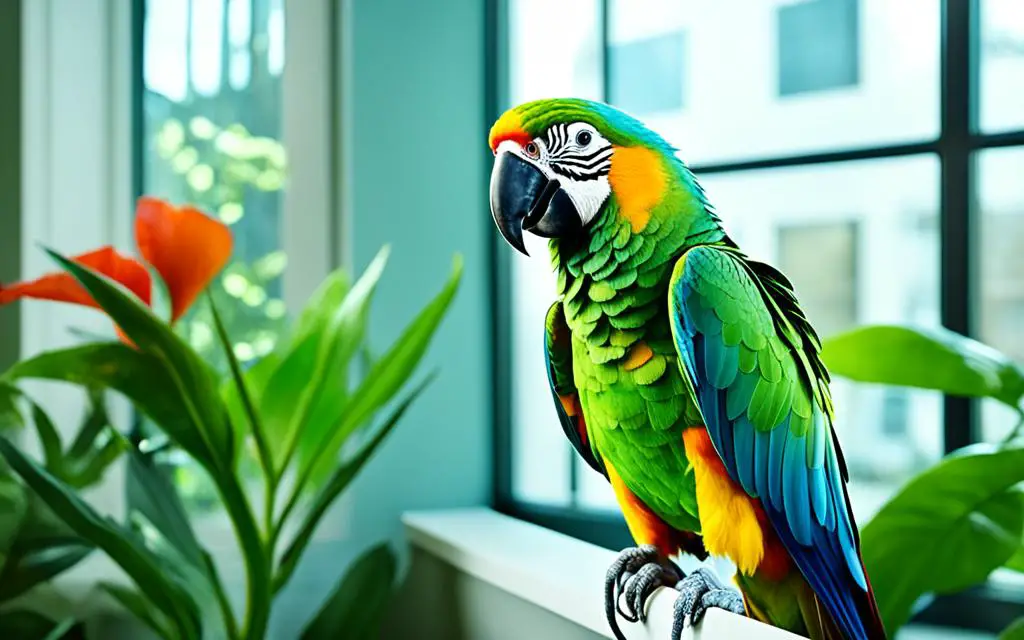
Comments are closed